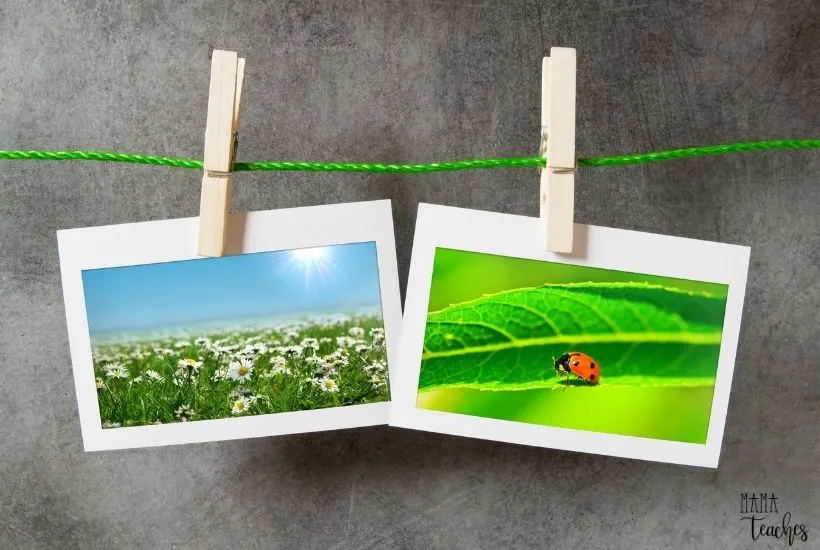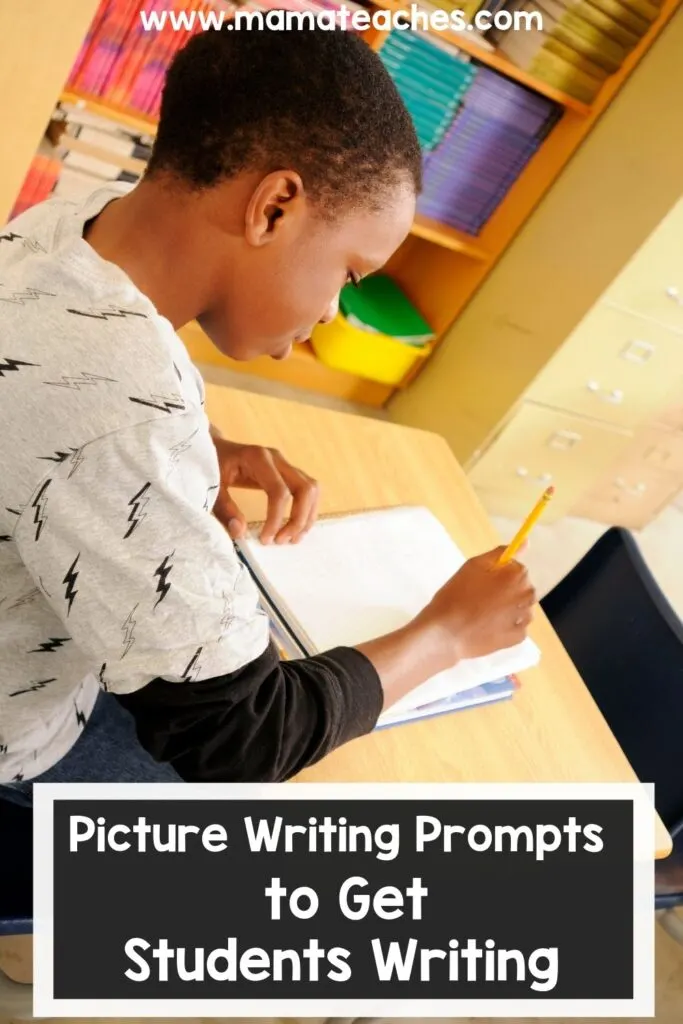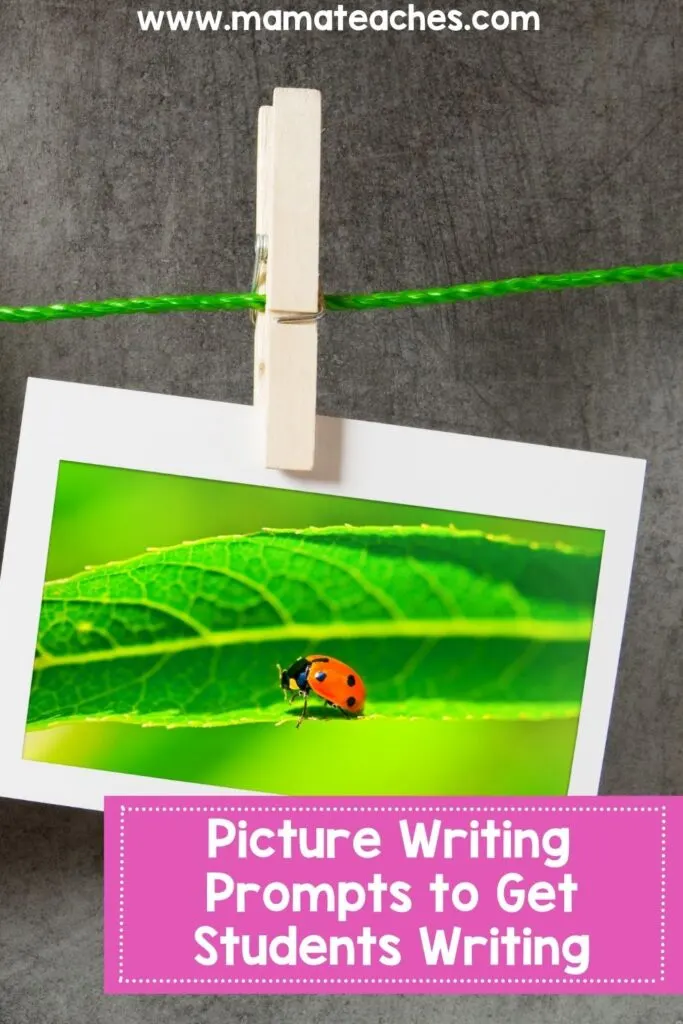A picture is worth a thousand words.
This is especially true of picture writing prompts.
They are a key to getting kids to write.

This article contains affiliate links to things that you might like.
Using Writing Prompt Images
Every teacher is familiar with this conversation.
You: Okay, let’s do some creative writing.
Student: I don’t know what to write about.
Picture writing prompts eliminate the “I don’t know” obstacle by stimulating the student’s imagination to come up with a story.
They are particularly effective with visual learners who gravitate toward images.
What Are Picture Writing Prompts?
Picture writing prompts, also called story picture prompts, are more than just a simple picture.
These pictures require inferencing from the student.
The student draws information from the picture and must then make an educated guess as to the particulars.
The information the student must glean:
- Who are these people/characters?
- Where are they?
- What are they doing?
- What probably happened right before this picture?
- What might happen next?
- What is the problem?
- How might the characters solve the problem?
The answers to these questions, which involve the use of logic (inferencing) and creativity, become the ideas for a story.

How to Use Photo Writing Prompts to Get Students Writing
Students need to learn two main skills when using picture writing prompts:
Skill 1: How to Ask Questions and Answer Them
A picture writing prompt contains information that must be drawn out by the student.
How does this happen?
The student must learn to ask and answer questions.
In the beginning, you should provide the questions.
You can do this orally or with an anchor chart.
These questions should identify (or inspire the student to imagine):
- Characters (Who is this story about?)
- Setting (Where are when does this story take place)
- Conflict (What is the problem the character encounters?)
- Resolution (How is the problem resolved?)
Skill 2: How to Organize Ideas into a Story
Now that the student has all the main components of a story, she needs to organize them.
I love to use a graphic organizer or a writing organizer (like the one I created for Christmas Roll and Write Writing Prompts).
It gets all the essentials on paper.
Younger students can write a paragraph from their organizer.
Experienced students can write a longer story with character and setting descriptions and multiple plot points.

Where to Find Writing Prompt Images
You can take two routes with story writing prompts: illustration writing prompts and photo writing prompts.
Illustration Writing Prompts
Picture books or cartoons can provide wonderful picture writing prompts.
Many books that teach inferencing can double as a source of writing prompt images.
You can also check the comics for story writing prompts.
Simply black out any text so the student is forced to imagine the dialogue himself.
Photo Writing Prompts
Photographs are another terrific source for picture writing prompts.
The New York Times provides a weekly image with the caption stripped away.
These images work especially well with older students.
In addition, I have created a batch of photo writing prompts to get your students writing.
You can check them out here.

Getting Students to Write with Picture Writing Prompts
Pictures inspire us.
Why not leverage that power to get your students writing with picture writing prompts?
You will never have to hear, “I don’t know what to write about,” again.
